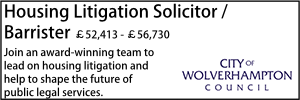Between 1-2% of social homes have “serious” damp and mould problems, regulator finds
- Details
The Regulator of Social Housing (RSH) has revealed that most tenants live in homes that are “largely free from damp and mould”, and that “the majority of landlords are able to deal with damp and mould effectively”, in its latest report on damp and mould in social housing.
However, the regulator warned that landlords “cannot afford to be complacent”, and set out a number of lessons to be learnt.
In December 2022, following the coroner’s report into the death of Awaab Ishak, RSH asked all large registered providers of social housing to submit evidence about the extent of damp and mould in their homes and their approach to tackling it.
The report, published yesterday (28 June), revealed that 55 out of 386 landlords submitted “poor responses” to the regulator’s initial request for evidence.
After asking for further information, RSH revealed that the “majority” provided more detail in their response to the follow up request than they had done in the first survey.
However, eight local authority landlords “did not provide an adequate response”. Examples of weaknesses in their approach, provided in the report, included:
- not having comprehensive and up to date stock condition surveys and data
- not having a clear process to deal with damp and mould in their homes or
- not being able to demonstrate they knew the number of cases of damp and mould in their homes.
The report noted that since the coroner’s report, RSH has received 12 self-referrals from landlords for a potential breach of the Home Standard due to damp and mould and 38 referrals from other sources.
Analysing the data from its initial survey, the regulator said: “While the picture is incomplete, our best estimate from the initial survey was that fewer than 0.2% of social homes have the most serious damp and mould problems, 1-2% have serious damp and mould problems, and a further 3-4% have notable damp and mould.”
The report outlined some of the “common features” from landlords who demonstrated “a comprehensive understanding and response to damp and mould and property condition”.
These were as follows:
- Strong board and councillor oversight of stock condition, including damp and mould, with regular progress reports made to governing bodies.
- High-performing landlords managed their data well, sharing it across the organisation, including using tenant data from a range of sources. They held accurate and up to date property condition information, based on comprehensive stock condition surveys.
- Effective organisations demonstrated a strong focus on understanding the current condition of tenants’ homes. For example, all staff visiting tenants at home were given training on damp and mould identification.
- Effective landlords looked at a range of measures to treat damp and mould. They offered tenants temporary accommodation whilst work was being carried out where needed.
The report went on to outline the themes identified in the “weaker responses”. These included:
- Some boards or councillors had limited governance or oversight of stock condition in general and of damp and mould in particular.
- Some poor responses included reference to out-of-date property data or incomplete stock condition surveys, with little or no validation of surveys.
- Some poor responses referred to responding to complaints of damp and mould without anyone looking at the tenant’s home or establishing the cause of the issue.
Looking ahead, RSH noted that it will be “continuing to scrutinise landlords’ performance on stock condition, damp and mould and DHS compliance”, including through new regulatory inspections being introduced from April 2024.
The regulator also revealed there will be “greater external scrutiny”, adding that comparative repairs performance and tenants’ views on the services they receive from their landlord will be published annually from summer 2024.
The report also revealed that the Social Housing (Regulation) Bill, currently in its final stages, will place “more responsibility on landlords to respond to complaints about damp and mould and other hazards quickly and inform their tenants about how to complain”.
Lottie Winson
Must read
Fix it fast: How “Awaab’s Law” is forcing action in social housing
Housing management in practice: six challenges shaping the sector
Why AI must power the next wave of Social Housing delivery
Sponsored articles
Unlocking legal talent
Walker Morris supports Tower Hamlets Council in first known Remediation Contribution Order application issued by local authority
15-01-2026 11:00 am
20-01-2026 5:00 pm


































